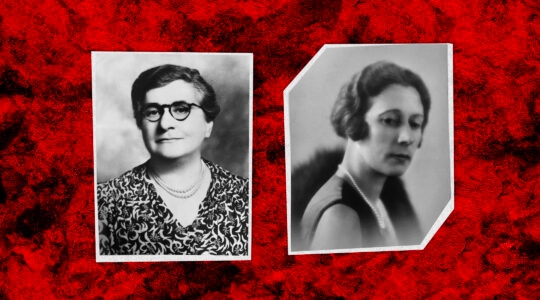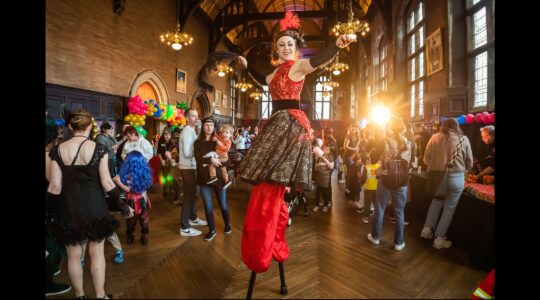Since Russia invaded Crimea, this region of Ukraine has been in the spotlight.
In the 1920s and ’30s, the area was dotted with Jewish agricultural colonies and home to approximately 29,000 Jews. Until 1938, when the Soviet system took the farms over and arrested many of their leaders and participants, AgroJoint, a program of the American Jewish Joint Distribution Committee, provided training and leadership for these collective farms, including ones where residents were required to speak Yiddish.
In 1933, JTA published a lyrical two-part series (here are parts one and two, and a related third article) by a visiting American about life on one collective farm in the “sunny and flowering peninsula” of Crimea, among Jews who were “learning to be tillers of the soil” and where “the ghetto Jew is gradually being transformed into a new man.”
“In these steppes, a small group of Jewish pioneers decided to recommence life as tillers of the soil,” he writes, adding that “the process was slow and painful. Eight years have passed, years of hard toil. Not in vain. The Kolchoz (collective farm) ‘Icor’ has already become one of the most prosperous in Crimea. A small group of pioneers have pointed the way out. Thousands of Jews who were slowly perishing in the villages, followed them.”
The author describes approvingly how a former “melamed,” or yeshiva teacher, has become the collective’s leading chicken expert. Also transformed is Leah Botnik, the product of a very wealthy upbringing who, after the Russian Revolution, was forced to join a collective farm.
Her friend Reisel tells the JTA writer how “at the beginning it was difficult for her to get used to the new life.”
“After all, she used to roll in milk and honey, and now she had to work. Leah was a snob. She could not associate with us, who scrubbed her floors, sold her vinegar, or repaired her shoes.”
“Time conquered pride,” the author writes. “Today, although no longer young, Leah, a healthy tan on her cheeks, is an excellent worker.”
Interviewed at the collective’s millinery shop, apparently organized by the Jewish group ORT, Leah, “a very cultured woman, explained to me many things about the kolchozes,” the author writes.
“If God will help us and we shall have a little more bread next year, there certainly will be nothing to complain about,” Leah tells him.
Their exchange concludes:
“You still believe in God?” I asked.
“Of course”, she replied smiling, “don’t you know I just raised a couple of pigs?”
For more photos of the Jewish collective farms in Ukraine in the 1920s and ’30s, check out the online exhibit “Beyond Relief: JDC’s Work in the Ukraine and Crimea in Between the Wars.”
JTA has documented Jewish history in real-time for over a century. Keep our journalism strong by joining us in supporting independent, award-winning reporting.





